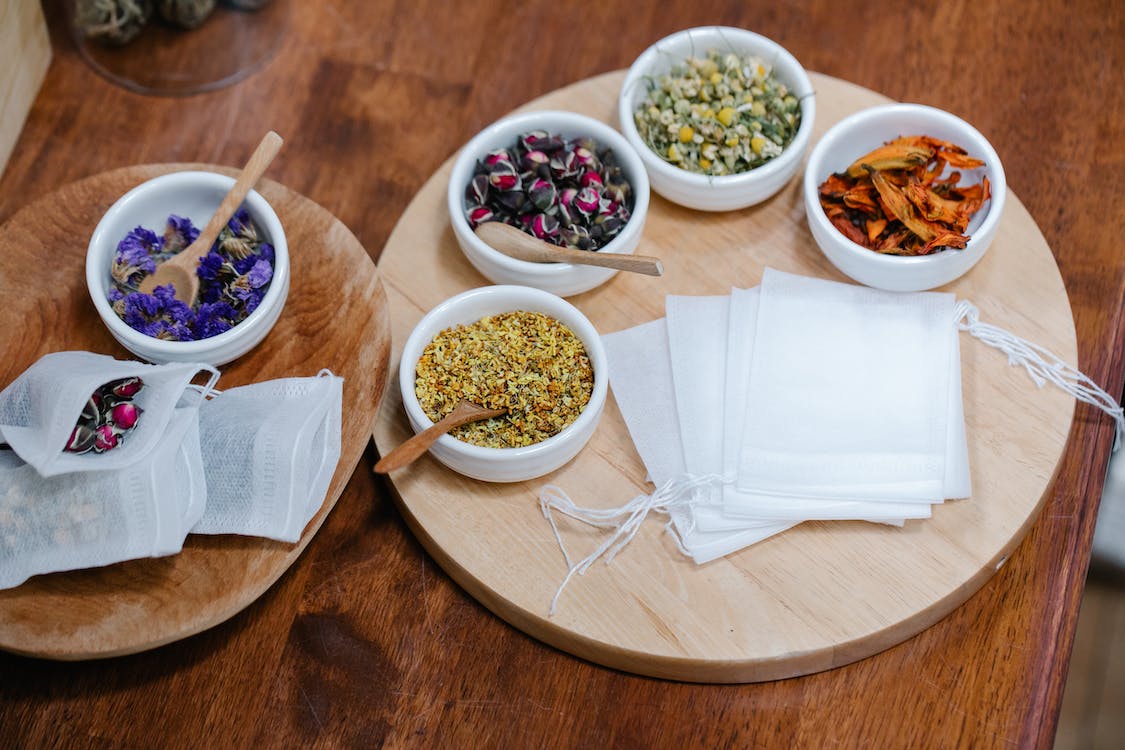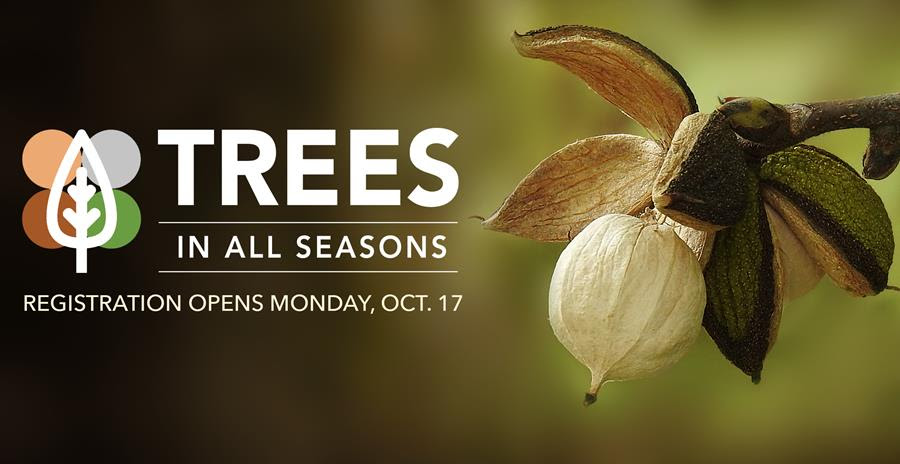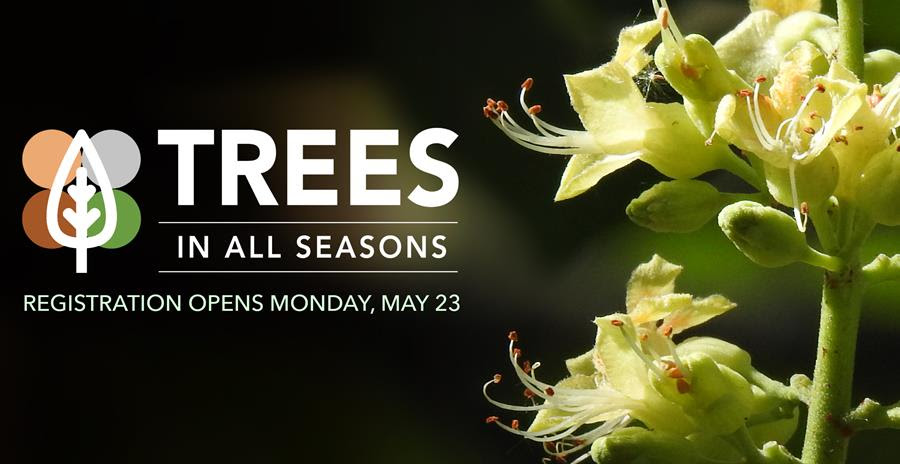Tag: webinar
Exploring Wild Ecosystems — New online course coming this spring!


There’s a hidden benefit to joining nature clubs that few people discuss. Once gained, this benefit can be wasted if you don’t take action on it. If you have no idea what I’m talking about, let me explain.
Early on, I realized that an easy way to learn mushrooms is to join a mushroom club. An easy way to learn plants is to join a botanical club. This is true for nearly any skill that can be taught. Join an organization and participate in its activities.
This sounds pretty obvious, but what is the hidden benefit that I mentioned earlier?
The hidden benefit is this: Nature clubs often take you to places that you’ve never been to before. A botanical club might botanize a rare northern white-cedar fen. A mushroom club might explore a remote red spruce forest.
The reason I call it a “hidden” benefit is this: many nature clubs never mention it. In fact, some nature clubs never draw attention to the place itself. Instead, they devote their attention solely to an isolated group of organisms that inhabit the place.
Now of course, organisms are vital components of a place, and we must learn them. But the place itself, and the relationships that build the place, are things we also must learn if we are to improve our ecological literacy.
What is this place? Why does it look like this? Who is responsible for its existence? How is this place any different from other places with similar names?
If we don’t ask these questions, we fail to see how any of its organisms are connected. If we don’t see the connections, we don’t see the place. If we don’t see the place, we act in strange ways — almost like hungry people who taste only ingredients, but not the meal itself.
All this to say, I decided to bring awareness to this issue by creating a new online course devoted to this topic. Exploring Wild Ecosystems is an educational resource I spent all of 2023 creating. I am excited to announce that it will be released in May.
If you want to improve your ecological literacy while studying fascinating ecosystems (alvars, barrens, bogs, glades, prairies, swamps, and more), consider joining the notification list.
I’ll have more information to share in the upcoming weeks.
Thanks for your support!
—Adam Haritan
Two Winter Opportunities To Learn Valuable Nature Skills

Greetings,
In anticipation of the winter season, I am excited to let you know that the Learn Your Land online courses are currently open for enrollment.
Additionally, both courses are on sale this week ($100 off each course).
If you are interested in learning how to forage mushrooms, consider enrolling in Foraging Wild Mushrooms. This 4-season online course is designed to help you safely and successfully harvest wild mushrooms from the forest, from the field, and even from your backyard.
To improve your knowledge of trees, consider enrolling in Trees In All Seasons. This online course teaches you how to identify over 100 trees in every season. If you want to develop the confidence to be able to look at a tree and say, “That’s black spruce,” or “That’s sourwood,” or “That’s mockernut hickory,” consider enrolling today.
These courses are self-paced and presented entirely online. Once enrolled, you can start, stop, and resume at any time.
Please note that both courses are on sale ($100 off each online course) for one week only — from today until Monday, December 18.
You can register and learn more about the courses here.
If you have any questions, please reply to this email and a response will be given shortly.
Remember, this sale expires on December 18th. Enroll today and let your winter season be filled with learning, adventure, and connection!
Thank you!
—Adam Haritan
HSA Webinar: What are Cocktail Bitters?
HSA Webinar: Opening the Gift of Herbs with Kids
The Herb Society of America Blog
By Betsy Smith
One very special way that The Herb Society of America shares the gift of herbs is by awarding Samull Classroom Herb Garden Grants. Each year ten grants are awarded for $300 each. Read about some of the exciting projects from some amazing schools across the country that have received these grants.
 The garden program at the Tucson Waldorf School recently completed an herb garden in their container garden area. This collection of stock tanks and pots is located near the entrance of the school and is available for people to admire, learn from, work on, and glean. It is their hope that community members will stop by the garden and collect herbs to complement their meals.
The garden program at the Tucson Waldorf School recently completed an herb garden in their container garden area. This collection of stock tanks and pots is located near the entrance of the school and is available for people to admire, learn from, work on, and glean. It is their hope that community members will stop by the garden and collect herbs to complement their meals.
 Somerset Academy Boco reported that with the HSA Samull Grant, they established an herb garden while implementing these learning objectives: 1. Apply practical knowledge in the form of gardening…
Somerset Academy Boco reported that with the HSA Samull Grant, they established an herb garden while implementing these learning objectives: 1. Apply practical knowledge in the form of gardening…
View original post 495 more words
HSA Webinar: Tea Blending: Creating Herbal Tea Blends with Balanced Flavor
The Herb Society of America Blog
by Angela McDonald
 Most of the teas that we drink these days are blended at some point. Even teas that seem simple such, as ginger or English Breakfast. The reasons for blending teas are varied but the most important one is this: blended teas taste good. My favorite reason is that when blending teas, the possibilities are endless!
Most of the teas that we drink these days are blended at some point. Even teas that seem simple such, as ginger or English Breakfast. The reasons for blending teas are varied but the most important one is this: blended teas taste good. My favorite reason is that when blending teas, the possibilities are endless!
There is nothing magical about the process of tea blending. Just like cooking, it mostly takes experimentation and creativity. Though big companies have whole departments dedicated to flavor experimentation and precise tea blending, there is no reason that we cannot all do this in our home kitchens. The hard part is knowing how to start.
Here are a few tips for blending:
Know your ingredients – not all herbs taste the same even if it seems like they should. Taste each ingredient individually so you can understand it before you start blending…
View original post 202 more words
HSA Webinar: Horticultural Therapy – Improving Health and Wellness
The Herb Society of America Blog
 Have you ever said to yourself or others, “My garden is my therapy?” If you have noticed that you feel more relaxed and even rejuvenated after imbibing the beauty, fragrance, and even hard work in your garden, you are not alone! Gardening provides physical exercise, as well as a rewarding intellectual and emotional connection. When recognized on a personal level, it is not a stretch to see how people in a wide variety of care environments who are facing diverse personal challenges can benefit from professionally facilitated horticultural experiences as well.
Have you ever said to yourself or others, “My garden is my therapy?” If you have noticed that you feel more relaxed and even rejuvenated after imbibing the beauty, fragrance, and even hard work in your garden, you are not alone! Gardening provides physical exercise, as well as a rewarding intellectual and emotional connection. When recognized on a personal level, it is not a stretch to see how people in a wide variety of care environments who are facing diverse personal challenges can benefit from professionally facilitated horticultural experiences as well.
 The profession of horticultural therapy (HT) was formalized in the early 1970s, though people have sought out gardens and gardening activities for respite and health recovery well before then. The practice of horticultural therapy involves a plant-based activity, a horticultural therapist, client(s), and identified treatment goals and objectives. Either in a group or as individuals, clients participate in outdoor…
The profession of horticultural therapy (HT) was formalized in the early 1970s, though people have sought out gardens and gardening activities for respite and health recovery well before then. The practice of horticultural therapy involves a plant-based activity, a horticultural therapist, client(s), and identified treatment goals and objectives. Either in a group or as individuals, clients participate in outdoor…
View original post 748 more words
Improve Your Tree Identification Skills This Autumn

Years ago, I didn’t have much of an appreciation for the months of October and November.
Becoming a devout student of trees changed that.
In my early days of tree identification, I placed too much emphasis on the spring and summer seasons. Everything was lively and green, I reasoned. What more did I need?
As time went on, I inevitably ran into problems whose solutions would only be found in the autumn season.
I remember seeing an oak in the summer season whose leaves contained deep sinuses. Scarlet oak and pin oak were two candidates, but my beginner’s mind required more information. Once autumn arrived, I easily identified the tree based on its acorns. (Scarlet oak acorns contain concentric rings.)
I also remember seeing an ash tree but being unable to determine its exact identity. Once autumn arrived, I easily identified the tree based on its color. (White ash foliage turns yellow to purplish; green ash foliage turns yellowish-brown.)
I could share more examples of how the autumn season provided answers to my most pressing questions. Suffice to say, I now rank the months of October and November as among the most important for honing tree identification skills.
To help you hone your tree identification skills this autumn season, I am opening up registration for my online course next week.
Trees In All Seasons is a four-season online video course designed to help you successfully identify over 100 trees in every season — spring, summer, fall, and winter.
This course is presented entirely online and it features over 75 exclusive videos that lay the groundwork for successful tree identification. If you are interested in identifying trees but are finding it difficult to learn through field guides and apps, consider enrolling as a student in Trees In All Seasons.
Please note: Trees In All Seasons will be open for registration for one week only from Monday, October 17th to Monday, October 24th. Upon registration, you have immediate access to all course content and you can watch the videos at your own pace.
To register for Trees In All Seasons, mark your calendar for Monday, October 17th and visit this link.
All additional information (including course structure, outline, and cost) will be posted on Monday.
I look forward to seeing you then!
— Adam Haritan
Learn To Identify 100 Trees In All Seasons

Greetings,
I am very excited to announce that registration for my brand new online course will be open on Monday, May 23rd.
Trees In All Seasons is a four-season online video course designed to help you successfully identify over 100 trees in every season — spring, summer, fall, and winter. Additional topics that are featured in this course include tree ecology, physiology, anatomy, and taxonomy.
This course is presented entirely online and it features over 75 exclusive videos that lay the groundwork for successful tree identification. If you are interested in identifying trees but are finding it difficult to learn through field guides and apps, consider enrolling as a student in Trees In All Seasons.
Please note: Trees In All Seasons will be open for registration for two weeks only from Monday, May 23rd to Monday, June 6th. Upon registration, you have immediate access to all course content and you can watch the videos at your own pace.
To register for Trees In All Seasons, mark your calendar for Monday, May 23rd and visit this link.
All additional information (including course structure, outline, and cost) will be posted on Monday.

My good friend Aaron Watson recently invited me on to his podcast to discuss my work with Trees In All Seasons and Learn Your Land. To learn more about the course, as well as my motives in creating the course, check out the recent interview:
Part 1
Part 2
I look forward to seeing you on Monday!
-Adam Haritan
HSA Webinar: Tea Gardening with Camellia sinensis
The Herb Society of America Blog
by Christine Parks
 Many gardeners are surprised to learn that Camellia sinensis is the most popular camellia in the world. And most tea drinkers in the U.S. have no idea that tea is made from the leaves of a camellia. Like them, I enjoyed tea for decades without giving a second thought to its origin. All I knew was that Golden-tips came from Assam, Genmaicha from Japan, and Red Rose Tea from the grocery store. I got my daily dose of caffeine from coffee and drank as much herbal tea (tisanes) as traditional caffeinated teas. Flash forward 25 years, I’ve given up on coffee and become intimately involved with tea – a relationship grown, both literally and figuratively, through gardening.
Many gardeners are surprised to learn that Camellia sinensis is the most popular camellia in the world. And most tea drinkers in the U.S. have no idea that tea is made from the leaves of a camellia. Like them, I enjoyed tea for decades without giving a second thought to its origin. All I knew was that Golden-tips came from Assam, Genmaicha from Japan, and Red Rose Tea from the grocery store. I got my daily dose of caffeine from coffee and drank as much herbal tea (tisanes) as traditional caffeinated teas. Flash forward 25 years, I’ve given up on coffee and become intimately involved with tea – a relationship grown, both literally and figuratively, through gardening.
Much has been written about herbal tea gardening. I have several of these books, along with various texts on herbal medicines, and an older favorite from my grandmother’s bookshelf, The…
View original post 720 more words

You must be logged in to post a comment.